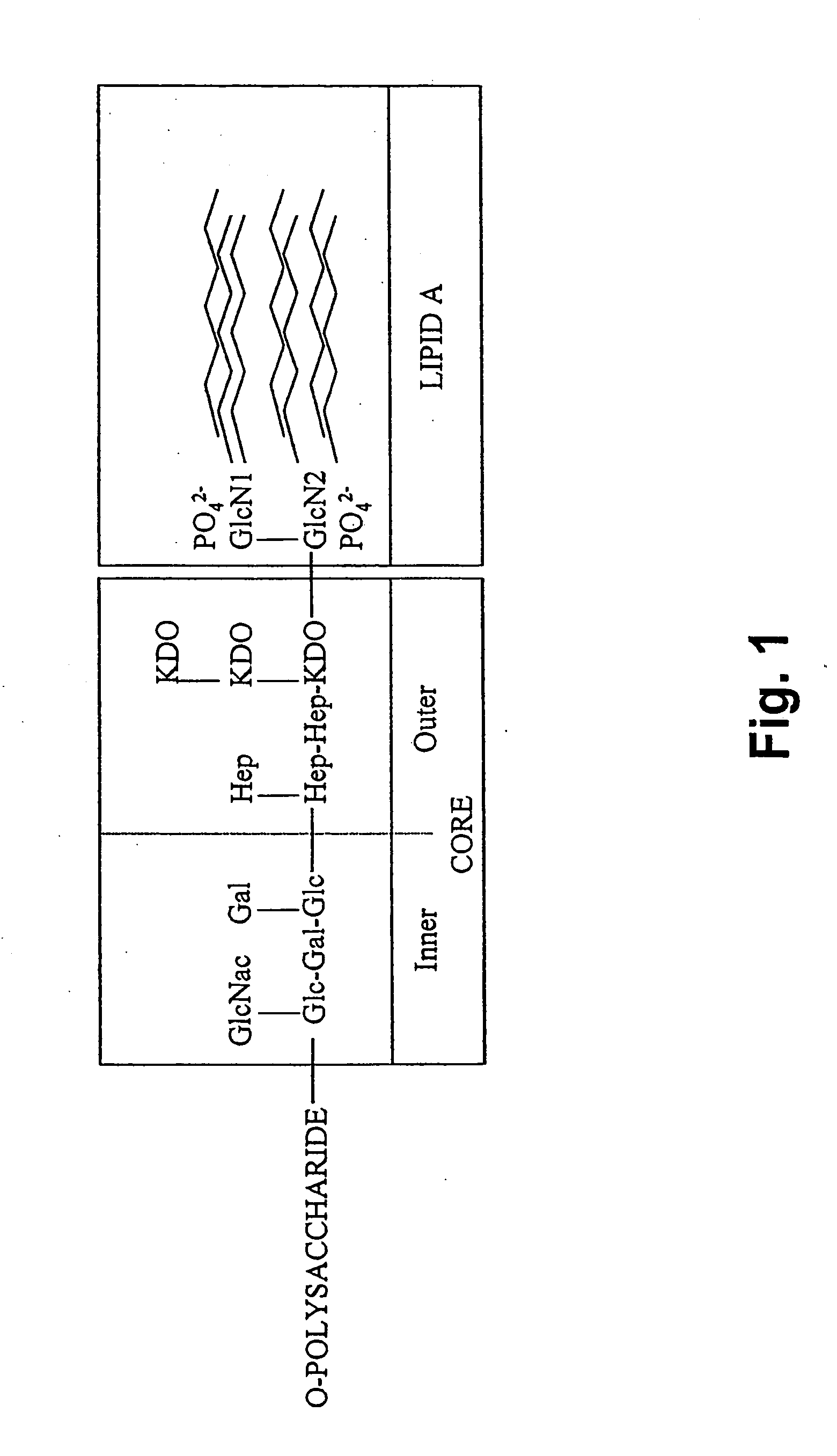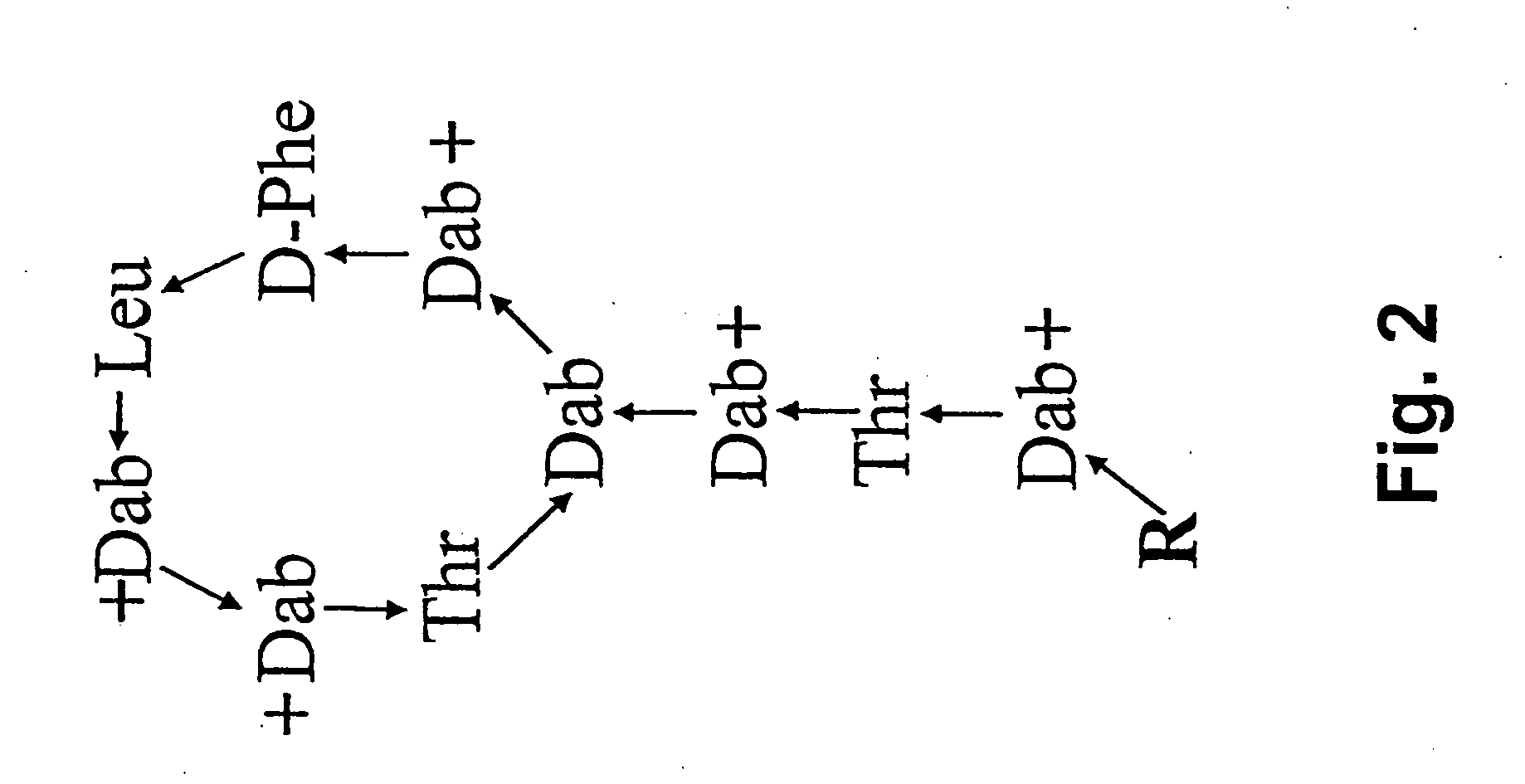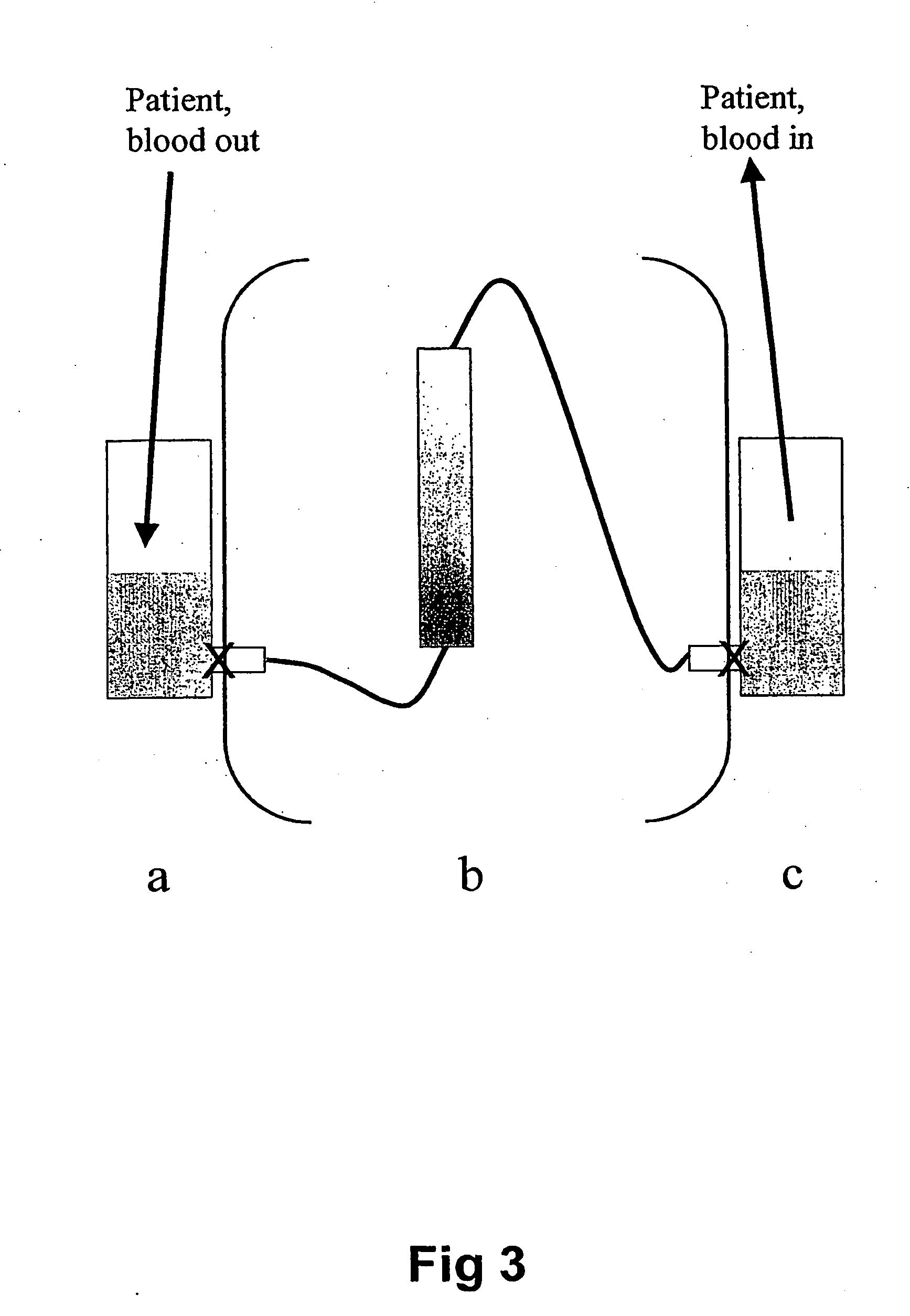Extracorporeal stablised expanded bed adsorption method for the treatment of sepsis
a sepsis and adsorption technology, applied in the field of sepsis treatment, can solve the problems of high morbidity and mortality, multiple organ dysfunction, high load of infectious pathogens, etc., and achieve optimal performance, large surface area, and high flow rate
- Summary
- Abstract
- Description
- Claims
- Application Information
AI Technical Summary
Benefits of technology
Problems solved by technology
Method used
Image
Examples
example 1
The Basics of a Stabilised Fluidised Bed Procedure
A. Running Human Whole Blood Through a Stabilised Fluidised Bed (EDTA-Stabilised Blood)
[0126] The purpose of the following example is to demonstrate the feasibility of running human non-separated blood through a stabilised fluid bed of high density, low diameter adsorbent particles.
Materials and Methods:
[0127] The experimental fluidised bed column set-up was established based on the following standard laboratory equipment: [0128] Pump (Ole Dich Aps, Denmark) [0129] Silicone tubing (MasterFlex) [0130] Magnetic stirrer (Janke and Kunkel) [0131] Column: UpFront Chromatography A / S, Denmark (cat. no. 7010-0000), diameter 1.0 cm, height 50 cm.
Adsorbent Particles (without Ligand):
[0132] Test-particles were provided by UpFront Chromatography A / S, Denmark. The particles had the following characteristics: [0133] Bead composition: epichlorohydrin cross-linked agarose (4% w / v) with a core of tungsten carbide [0134] Bead shape: Mainly sp...
example 2
Specific Adsorption of an Enzyme-Conjugate from Whole Human Blood in a Stabilised Fluidised Bed; Binding of Avidin-Peroxidase by Biotin-Coupled Particles
[0151] The aim of the following experiment was to establish the feasibility of binding of a specific bio-macromolecular entity of interest from whole human blood in a stabilised fluidised bed procedure. For the sole purpose of demonstrating such binding, an enzyme-conjugate was used as a model protein as this allowed a sensitive assay to be performed in order to demonstrate the binding of the enzyme. The test substance (peroxidase-labelled avidin) was added to whole human blood followed by adsorption of the test substance to a high-density biotin labelled adsorbent in a stabilised fluidised bed procedure. Binding of the test substance to the adsorbent was then demonstrated by the development of staining on the adsorbent particles though the action of the bound peroxidase conjugate using a suitable indicator enzyme substrate (diamin...
example 3
Specific Adsorption of Mouse Antibodies from Whole Bovine Blood in a Batch Operation, Binding of Mouse Immunoglobulin by Anti-Mouse Antibody-Coupled Particles
[0170] The aim of this example was to demonstrate the feasibility of using an anti-mouse immunoglobulin antibody-coupled adsorbent for the extraction of mouse antibodies added to whole bovine blood.
[0171] The adsorbent used for this experiment was a high density divinylsulfone-coupled agarose / stainless steel adsorbent (Upfront Chromatography A / S, Denmark) to which an anti-mouse immunoglobulin antibody from rabbits (code no. Z0109, DAKO A / S, Denmark) was coupled. [0172] Bead composition: epichlorohydrin cross-linked agarose (4% w / v) with a core of stainless steel particles (FIG. 7) [0173] Bead shape: Mainly spherical [0174] Diameter: 20-40 μm [0175] Average individual bead density in the hydrated state: 3.8 g / ml [0176] Ligand: Rabbit anti-mouse immunoglobulin (DAKO A / S, Denmark, code no. Z0109) coupled through divinylsulfone a...
PUM
| Property | Measurement | Unit |
|---|---|---|
| mean diameter | aaaaa | aaaaa |
| density | aaaaa | aaaaa |
| mean diameter | aaaaa | aaaaa |
Abstract
Description
Claims
Application Information
 Login to View More
Login to View More - R&D
- Intellectual Property
- Life Sciences
- Materials
- Tech Scout
- Unparalleled Data Quality
- Higher Quality Content
- 60% Fewer Hallucinations
Browse by: Latest US Patents, China's latest patents, Technical Efficacy Thesaurus, Application Domain, Technology Topic, Popular Technical Reports.
© 2025 PatSnap. All rights reserved.Legal|Privacy policy|Modern Slavery Act Transparency Statement|Sitemap|About US| Contact US: help@patsnap.com



